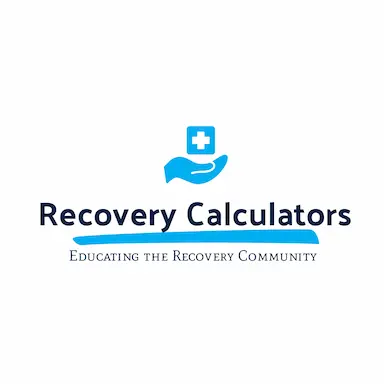What is Fast Alcohol Screening Test?

What is fast alcohol screening test? Learn how this quick assessment helps detect alcohol consumption levels and its significance in health evaluations.
Alcohol Dependence Scale: Recognizing Alcohol Misuse

Assess your drinking habits with the Alcohol Dependence Scale (ADS) and understand your risk level for alcohol dependence. Take the test today!
PAWSS Alcohol: Key Tool for Alcohol Withdrawal Risk

Discover how the PAWSS alcohol tool predicts withdrawal severity, assesses risks, and aids in safer recovery with proper treatment options.
Librium and Alcohol: Risks, Side Effects, & Safe Detox

Discover the risks of mixing Librium and alcohol, including side effects, overdose risks, and how Librium helps in alcohol detox and addiction treatment.
Effects of Chlordiazepoxide and Alcohol Mix

Mixing chlordiazepoxide and alcohol can cause life-threatening side effects. Discover why doctors warn against this combination and how to stay safe.
Carbamazepine and Alcohol: Interaction, Effects, and Risks

Learn about the risks and interactions of carbamazepine and alcohol. Understand how mixing these substances can affect your health and treatment.
Physiology of Alcohol Withdrawal: Effects, Risks & Treatment

Learn about the physiology of alcohol withdrawal, its effects, risks, and treatment options. Understand symptoms, dangers, and how to manage withdrawal safely.
Alcohol Withdrawal Nursing Interventions

Discover essential alcohol withdrawal nursing interventions to ensure patient safety, manage symptoms, and promote recovery in clinical settings.
What the SMAST Tool Does for Alcohol Screening

Dealing with alcohol addiction begins with proper screening. The Short Michigan Alcoholism Screening Test (SMAST) offers a simple yet effective way to detect problem drinking. Developed to identify signs of alcoholism early, this tool asks a series of straightforward questions. It helps uncover drinking behaviors that may point toward the need for further intervention. Understanding how the SMAST operates is important for those involved in alcohol rehab and clinical settings. Its user-friendly design makes it accessible to various environments, such as hospitals and alcohol rehabs. It ensures that individuals receive the help they need before alcohol dependency leads to more serious consequences. Understanding the SMAST Tool The Short Michigan Alcoholism Screening Test (SMAST) is an essential instrument for identifying potential alcohol use problems. Designed to be concise and straightforward, it consists of just a few targeted questions that reveal valuable insights into an individual’s drinking behaviors. This tool is crucial in various settings, especially in alcohol rehabs, where early detection can significantly impact the treatment journey. The primary objective of the SMAST tool is to detect patterns indicating problem drinking. It achieves this by probing into how alcohol consumption affects daily life. By asking specific questions about drinking habits and their effects on relationships and responsibilities, the SMAST can identify red flags that might otherwise remain unnoticed. Early detection of alcohol-related issues can prevent the escalation of health problems. Unchecked, alcohol use can lead to severe consequences like liver disease and psychological disorders. By using the SMAST tool, healthcare providers can intervene earlier, potentially saving lives and improving long-term health outcomes. This proactive approach underscores the importance of integrating SMAST into regular screenings, enabling timely and tailored interventions. How the SMAST Tool Works The SMAST tool’s functionality lies in its simple yet effective questionnaire. It comprises ten yes-or-no questions tailored to capture the nuances of an individual’s drinking behavior. These queries delve into areas such as social and personal impacts, gauging whether alcohol consumption is starting to interfere with normal functioning. Here’s a look at the basic structure of the questionnaire: 1. Questions exploring the frequency and context of drinking. 2. Queries on the impact of drinking on home and work responsibilities. 3. Questions assessing social interactions and alcohol’s effects on them. Scoring the SMAST is straightforward. Each “yes” answer is typically given a point, with cumulative scores indicating the severity of the problem. A higher number suggests increased concerns about alcohol misuse, prompting further evaluation or intervention. SMAST is employed in diverse environments, making it versatile. In hospitals, it can form part of standard screenings. In alcohol rehabs, it’s vital to tailor specific treatment plans. By using this tool, healthcare professionals ensure a comprehensive understanding of each individual’s situation and create personalized care paths that align with particular needs. Benefits of Using the SMAST Tool The SMAST tool is valued for its simplicity and rapid administration. Its ease of use allows healthcare providers to screen individuals efficiently. The tool’s straightforward nature makes it accessible for both professionals and non-specialists, enhancing its usability in diverse settings. Here are some core benefits: – Accessibility: Easy for patients and clinicians to understand and implement without extensive training. – Cost-Effectiveness: Requires minimal resources, making it an economical choice for large-scale screenings. – Quick Administration: Completed in a brief time frame, allowing for timely assessments. Another advantage is that SMAST complements other tools, like CIWA and COWS, used for different aspects of addiction assessment. Using them together provides a more complete picture of a person’s substance use and its impacts. These combined assessments are crucial in tailoring interventions to suit individual needs better, ensuring a more comprehensive approach to treating alcohol dependence. Role of SMAST in Recovery and Treatment Plans SMAST plays a pivotal role in shaping personalized recovery journeys. Its results guide the creation of specific treatment plans in alcohol rehabs, ensuring interventions are aligned with each patient’s unique challenges. This tool’s impact on recovery outcomes is profound. By pinpointing problem areas, SMAST enables more focused therapeutic strategies that enhance recovery chances. It helps clinicians identify specific behaviors that need addressing, contributing to more effective treatment. Integration with other tools further supports the treatment process. By working alongside methods that monitor progress, SMAST aids in consistently adjusting treatment plans. This ongoing assessment ensures care remains relevant and effective as patients navigate their path to recovery. The tailored approach facilitated by SMAST and similar tools is key to achieving long-term sobriety and well-being. Conclusion The SMAST tool remains an invaluable asset in alcohol addiction screening and treatment. Its ability to efficiently identify problem drinking behaviors enables early intervention, a critical factor in preventing severe health consequences. Through simple yet telling questions, SMAST provides insights that guide comprehensive treatment strategies. As part of broader assessment frameworks, SMAST works in harmony with other tools to deliver a nuanced understanding of an individual’s relationship with alcohol. This partnership ensures that treatment plans are targeted and adaptable to changing needs as recovery progresses. By integrating these insights, alcohol rehabs can offer more personalized care, directly impacting recovery success rates. The ongoing relevance of SMAST is clear. Its contributions to personalized treatment planning highlight its role in battling alcohol use disorder efficiently. Acknowledging its benefits, combined with a commitment to continuous improvement in screening practices, will empower more individuals to reclaim their lives from alcohol dependency. Are you exploring tools for alcohol use assessment? Visit Recovery Calculators to discover how the SMAST tool and others like it can support effective screening and treatment in your recovery journey. Our platform provides detailed insights and resources tailored to empower your path to wellness.
Exploring All Our Addiction Calculators

Addiction can be challenging, but having the right tools can make a big difference. Addiction calculators are essential resources in the recovery process. These calculators help healthcare professionals assess and manage withdrawal symptoms and treatment effectiveness. Providing accurate data enables tailored treatment plans that boost successful recovery. For those involved in or considering rehab, knowing how these calculators function can provide deeper insights into their recovery journey. This article explores our range of calculators, shedding light on how they support effective addiction treatment. Introduction to Addiction Calculators Addiction calculators are critical tools used in the recovery process for individuals battling substance use disorders. These calculators provide objective data that help patients and healthcare professionals understand the severity and progress of addiction treatment. They are crucial in monitoring withdrawal symptoms, evaluating treatment effectiveness, and tailoring individual recovery plans. These calculators are important for several reasons: – Accuracy: They deliver precise assessments that aid in developing specific treatment strategies. – Monitoring: Regular use can track a patient’s progress and adjust plans as necessary. – Objective Measurement: They offer an unbiased view of a patient’s condition, essential for effective care. For example, when patients enter alcohol or drug rehabs, these calculators help healthcare providers create a baseline to start their treatment. Using these calculators, professionals can see which symptoms need immediate attention and which areas require longer-term strategies. This tailored approach improves the chances of successful recovery by focusing on each patient’s specific needs. Detailed Look at Key Calculators Three addiction calculators stand out for their specific roles in recovery assessments: CIWA, COWS, and SMAST. CIWA (Clinical Institute Withdrawal Assessment for Alcohol) This tool measures the severity of alcohol withdrawal symptoms. It evaluates areas like nausea, tremors, and anxiety. Healthcare providers use the CIWA to determine medication needs and monitor treatment effectiveness. This ensures that patients receive the right care to minimize discomfort and manage risks associated with withdrawal. COWSWS (Clinical Opiate Withdrawal Scale) This calculator helps track symptoms in patients withdrawing from opiates. It assesses factors such as sweating, restlessness, and muscle pains. By using COWS, medical professionals can offer timely responses to these symptoms, making the withdrawal process more manageable for patients. SMAST (Short Michigan Alcoholism Screening Test) SMAST is a screening tool for identifying potential alcohol use disorders. It consists of a series of questions that help detect problematic drinking patterns. Healthcare providers use SMAST to determine whether further evaluation or intervention is needed. These calculators are vital in creating effective treatment plans because they provide a structured way to evaluate and respond to withdrawal symptoms. The insights gained from these tools guide healthcare professionals in making informed decisions, resulting in better care and improved recovery outcomes. Exploring Other Essential Calculators Beyond the well-known CIWA, COWS, and SMAST, several other valuable calculators are crucial in the addiction recovery landscape. These lesser-known tools provide support across different aspects of rehabilitation, offering healthcare professionals and patients refined insights into treatment progress. One such calculator is the Alcohol Use Disorders Identification Test (AUDIT), which helps screen for harmful alcohol consumption. Another important tool is the Drug Abuse Screening Test (DAST), useful for identifying drug-related problems in various settings. Both calculators offer comprehensive questions that guide professionals in assessing potential substance use issues. Employing these calculators in different contexts, including luxury rehabs, elevates individuals’ care level. Luxury rehabs often have more resources to invest in advanced assessment tools, ensuring that treatment plans are tailor-made to the specific needs of their clients. This personalization level enhances the recovery programs’ effectiveness, encouraging positive outcomes. These tools serve essential functions throughout the rehab process: – Early Detection: Identify substance use issues early on. – Progress Monitoring: Track changes in behavior and health over time. – Treatment Adjustment: Provide data to adjust therapy methods for better results. Incorporating Calculators in Rehab Settings Many top rehabs in Scottsdale and Phoenix integrate these calculators into their treatment plans to boost recovery success rates. These facilities can offer a consistent and evidence-based approach to addiction treatment using such structured tools. This integration ensures that treatments are adaptive and responsive to changes in a patient’s condition. In the rehab environment, calculators like CIWA and COWS are often used daily to assess the current state of a patient’s withdrawal symptoms. This frequent monitoring allows staff to make informed decisions about medication adjustments and therapeutic interventions. By addressing symptoms as they arise, rehabs can provide more effective detoxification and reduce the risk of relapse. Furthermore, calculators help rehabs pinpoint specific areas where patients require more assistance, such as coping strategies or mental health support. This targeted care improves the rehab experience and outcomes, leading to more sustainable recovery paths. Conclusion The use of addiction calculators is pivotal in crafting effective and personalized treatment strategies for individuals overcoming substance use disorders. These calculators provide a foundation for understanding withdrawal symptoms and treatment needs, thus enhancing the care patients receive. Whether in renowned Scottsdale and Phoenix rehabs or luxury rehab centers, these tools remain integral to successful recovery planning. These calculators allow for precise monitoring and evaluation of patient progress as part of a comprehensive approach to addiction treatment. Recovery Calculators stand at the forefront, offering these valuable resources. Our tools are designed to empower professionals and patients alike, making strides towards profound and lasting recovery. Discover how our alcohol withdrawal calculators and other tools can aid your journey at www.alcoholwithdrawalcalc.com.

